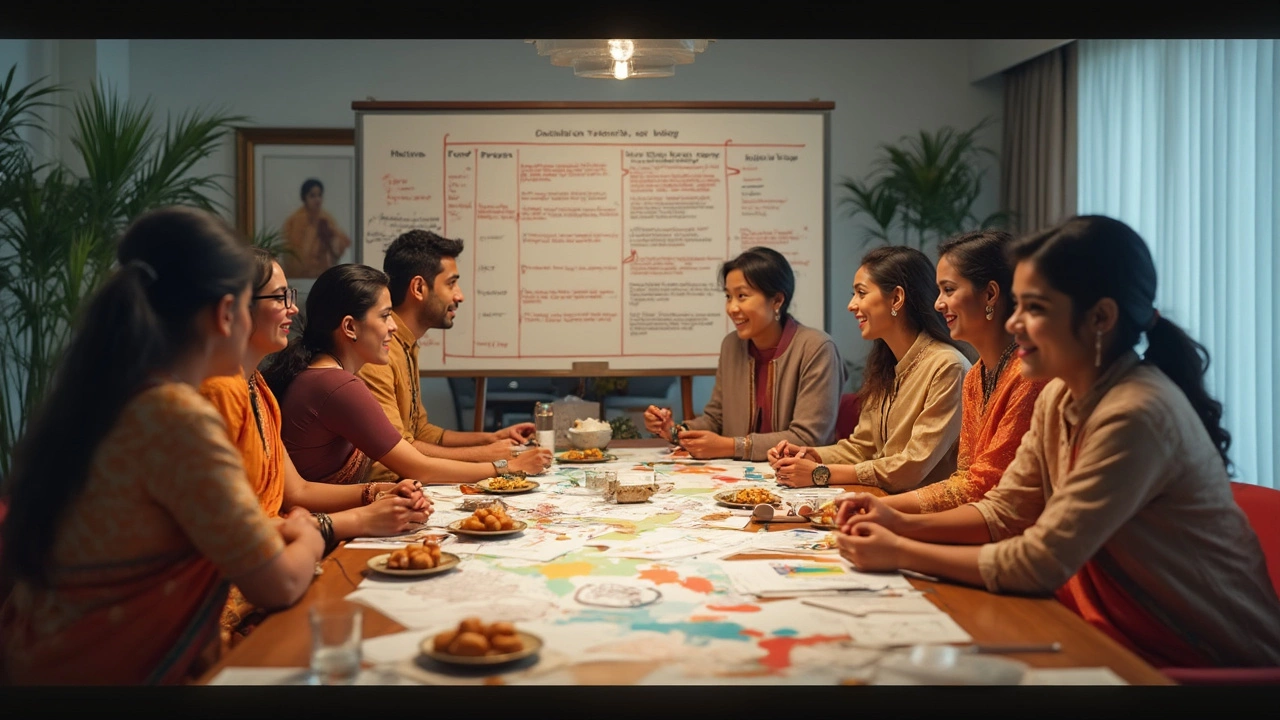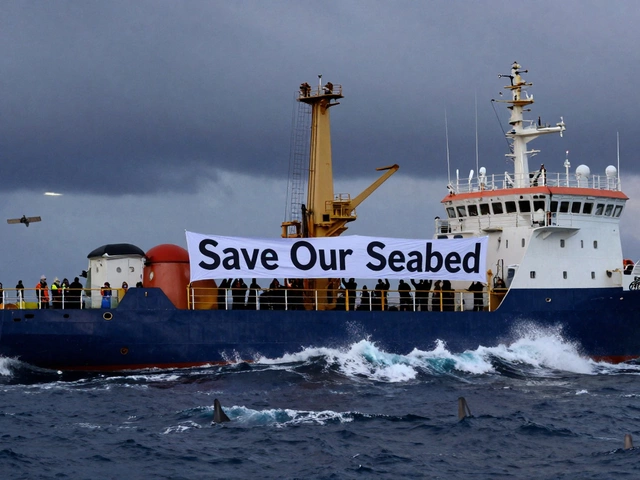Organizing a charity event can seem like a daunting task, but with the right approach, it can become both manageable and rewarding. First things first, setting clear and realistic goals is crucial. Without a clear aim, your event risks becoming just an expensive gathering. Whether you're looking to raise a certain amount of money or simply raise awareness, having that goal in mind shapes all your decisions to come.
Next on the list is budgeting. Allocate your funds wisely; it’s all about maximizing impact while minimizing cost. Think about potential expenses like venue rental, catering, entertainment, and marketing. On a tight budget? Consider in-kind donations or sponsorships to lessen the financial burden.
- Setting Your Goals
- Budgeting and Fund Allocation
- Choosing the Right Venue
- Engaging Activities and Entertainment
- Harnessing the Power of Social Media
- Follow-Up and Thank Yous
Setting Your Goals
The first step in throwing a successful charity event is setting goals that are both achievable and impactful. It’s like plotting your destination before starting a journey—without a clear direction, you might end up going in circles.
Define the Purpose
Ask yourself what you aim to achieve with this event. Are you raising funds, increasing awareness, or building a community around a cause? Each of these objectives will demand different approaches, so knowing upfront helps in planning effectively.
Set a Fundraising Target
If raising money is a primary goal, setting a specific amount can really help. Not only does it give you a clear financial target, but it also motivates your team and donors. Break down your target to understand what it means per ticket or donation. For instance, if you wish to raise $10,000 and anticipate 200 attendees, each needs to contribute about $50 on average.
Measurable Outcomes
Having measurable outcomes is vital. It’s not just about how much money you raise, but also about the milestones you achieve along the way. Set tangible goals like the number of attendees, social media engagement, or media coverage. Measure them to gauge success beyond dollars raised.
Timeline for Success
A timeline keeps you on track and ensures every task aligns with your ultimate goals. Break down your planning process into stages and assign deadlines. Timely execution is key—last-minute scrambles can lead to unnecessary stress and increased costs.
An interesting fact: events with clearly defined goals tend to raise 40% more funds compared to those without. Investing time in planning pays off exponentially.
Budgeting and Fund Allocation
Alright, let's tackle the nitty-gritty of budgeting and fund allocation. This step can make or break your charity event. Start with a comprehensive budget plan. It doesn’t have to be complicated, but it should cover all bases. List every possible expense, from big-ticket items like venue rental to small ones like printing costs. Don’t forget the unexpected expenses - yes, there will be some!
Identify Key Expenses
To set a realistic budget, break down your expenses into categories:
- Venue costs: Look for community halls or open-air spaces. Sometimes, if you mention it’s for charity, you might get a discount.
- Catering: Check if local restaurants or cafes would like to sponsor food or offer a discount as a donation.
- Marketing: Allocate funds for flyers, posters, and digital ads. Remember, social media is your low-cost friend here!
- Entertainment: Whether it’s a DJ, band, or a speaker, costs can vary. See if local talent would like to offer their services for a good cause.
Allocate Funds for Maximum Impact
Once you know your expenses, think about how your resources can best serve the purpose of the event. Spend smartly. Focus on areas that will bring in the most fundraising. A well-spent dollar on visibility might return ten in donations!
Monitor and Adjust
Keep track of all incoming and outgoing funds. It’s not just about staying in the black but also being accountable. Use simple spreadsheets or budgeting software; there are many free tools out there.
Here's a simple budget outline:
| Item | Estimated Cost |
|---|---|
| Venue | $500 |
| Catering | $300 |
| Marketing | $150 |
| Entertainment | $200 |
| Miscellaneous | $100 |
| Total | $1250 |
Stick to your budget, but don't be afraid to adapt as needed. Think ahead, engage your resources wisely, and your event will be both fun and financially sound!
Choosing the Right Venue
Picking the perfect spot for your charity event can make a world of difference. The venue sets the tone and vibe, so think about the atmosphere you want to create. Are you envisioning an elegant gala or a casual community picnic? The choice helps people feel the spirit of the cause.
A key factor in venue selection is location. Aim for somewhere accessible, perhaps close to public transport, or with ample parking. Remember, if attendees find it hard to get there, they might just skip it. If it’s a local cause, local venues might have the local charm you’re looking for.
Space matters. Make sure there’s enough room for everything: seating, stage, dining, or whatever activities you've planned. Overcrowding can ruin an event, while too much space might feel empty and awkward. Striking the right balance is essential.
Consider the Costs
The cost of the venue should fit snugly into your budgeting plan. Instead of splurging, look for venues willing to offer discounts or to partner for a good cause. Negotiations can often lead to perks like extra tech support or extended hours without added fees.
Don’t forget practical needs like audio-visual equipment, kitchen facilities, or a dance floor if needed. Some venues include these amenities, while others might charge extra.
Weather Contingencies
If you’re going with an outdoor setting, always have a backup plan for weather. A sudden turn in weather can quickly dampen spirits. Check if the venue offers tents or indoor spaces just in case.
| Factor | Details |
|---|---|
| Location Proximity | Ease of access by public transport or ample parking |
| Capacity | Matches estimated number of attendees for comfort |
| Cost | Fits within budget; possible discounts for non-profits |
| Amenities | Includes necessary equipment and facilities |
In the end, the chosen venue should reflect the cause and make participants feel like they’re part of something special. Every detail counts in making your event memorable and impactful.

Engaging Activities and Entertainment
What makes a charity event stand out? It's often the engaging activities that keep your guests entertained and clicking with the cause. Choosing the right mix of activities is key to increasing participant engagement and enhancing your event's appeal.
Activities That Resonate
Consider including activities that tie directly to your cause. For instance, a charity supporting arts education could feature local artists painting live during the event. This not only supports the thematic aspect but also provides entertainment. An auction is another classic option. Whether it's a silent auction or a live one, offering interesting items people want to bid on is essential.
"Interactive activities increase attendee engagement, which, in turn, has a positive impact on fundraising outcomes," says Mark Smith, a seasoned event planner who’s been in the nonprofit sector for over two decades.
Live Entertainment
Live music or a DJ can add a lively atmosphere to your event. Make sure the entertainment aligns with the event planning theme. Hosting a formal gala? Opt for a jazz quartet or a classical ensemble. Hosting a more casual gathering? A local band or upbeat DJ might fit the bill.
Workshops and Demonstrations
Offering workshops or live demonstrations can be both educational and entertaining. This could be anything from cooking lessons by a local chef to fitness classes if you're supporting a health-related cause. Such activities make the event interactive and give guests something memorable to talk about.
Here's a quick table to give you an idea of what activities might match different themes:
| Event Theme | Suggested Activities |
|---|---|
| Health and Wellness | Yoga session, nutrition workshops |
| Environmental | Interactive recycling demonstrations, nature walks |
| Education | Book reading, panel discussions |
In summary, having a good mix of engaging activities and entertainment not only keeps guests amused but can significantly boost your fundraising success. Remember, people tend to support causes they feel connected with, so use activities to craft a memorable experience.
Harnessing the Power of Social Media
Let's face it, in this digital age, social media is where it's at. To make your charity event a resounding success, you need to get the word out, and what better way than using platforms with millions of active users daily?
1. Choosing the Right Platforms
Not all social media platforms are created equal. It's important to pick the ones that align with your audience. For visual content, Instagram and Pinterest are your go-tos. If your audience engages with bite-sized news, Twitter is key. And if you're looking for detailed discussions, Facebook is your friend.
2. Content is King
Eye-catching content is crucial. Use powerful images and videos to tell your story. Share personal testimonials or success stories, and don't forget to include a call-to-action. Encourage people to share your posts, tag friends, or use a custom hashtag to boost visibility.
3. Engage Consistently
Posting about your fundraising or event planning once isn’t enough. Create a content calendar that builds up to the event. Daily or weekly updates keep momentum going. Engage with comments, respond to messages, and show your followers that you're listening.
4. Influencers and Collaborations
Team up with local influencers or celebrities who resonate with your cause. Their endorsement can significantly widen your reach and add credibility to your event. Make sure any collaboration feels authentic to both your cause and their brand.
5. Measuring Success
After all the hard work, see what worked and what didn't. Use analytics tools to measure engagement and reach. Learn from the data to make your next event even better. Did Instagram Stories drive the most traffic? Did a particular post stand out? This is gold for your next nonprofit event.
Done right, social media can be your greatest ally in spreading the word and connecting with those who care about your cause as much as you do.
Follow-Up and Thank Yous
So, your charity event was a hit—congrats! But don't hit the brakes just yet. The days following your event are almost as important as the event itself. How you handle the follow-up can make or break your relationship with attendees, sponsors, and donors. Think of it as tying up loose ends and leaving everyone with a good impression.
Personalized Thank Yous
Start with personalized thank you messages. This could be a handwritten note, an email, or even a social media shoutout. Mention specific contributions they made or how their presence made a difference at the event. It's all about making people feel appreciated and acknowledged. You wouldn't just run an event and then ghost everyone, right?
Statistics suggest that a personalized thank you note can increase future donations by 50%. Plus, who doesn't love a bit of extra gratitude in their inbox?
Share the Success
Send out a recap of the event, highlighting what was achieved. Use real numbers and stories. How much did you raise? How will the funds be used? People love knowing the impact of their contribution, and it fuels further involvement. Email newsletters or a post-event blog are great for this.
- Include photos or videos from the event.
- Add testimonials or snippets from guest speakers.
- Mention the amount raised and what the funds will support.
Feedback and Improvement
Ask for feedback. Whether it's through a simple survey or more casual social media comments, getting their thoughts can be invaluable. What did people love? What could be improved? Knowing this will fine-tune your next event planning efforts and make them even better.
Keep the Connection Alive
Finally, keep the momentum going by staying connected. Regular updates about your organization's success or even small achievements can keep your community engaged. Whether it’s a quarterly newsletter or monthly updates, make sure they know they're still part of the journey.





